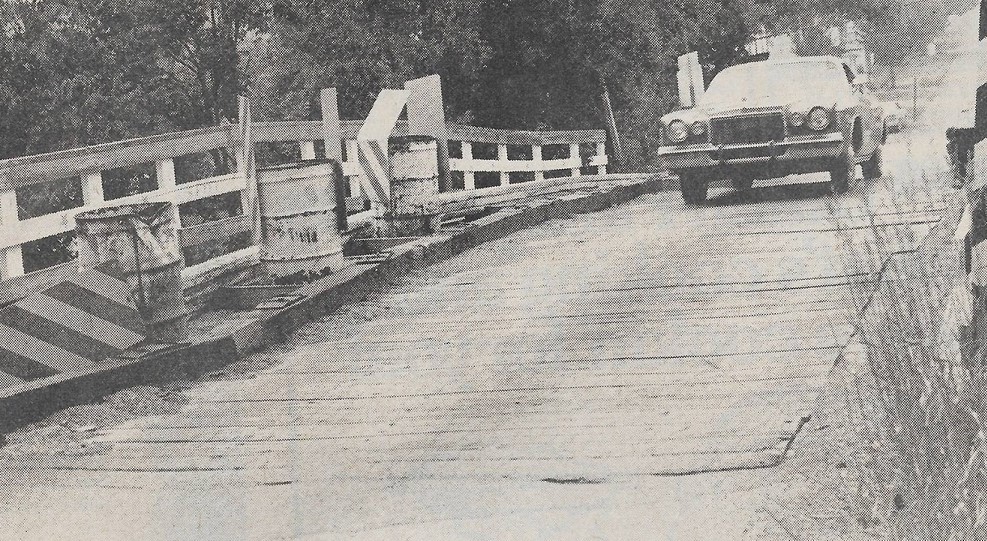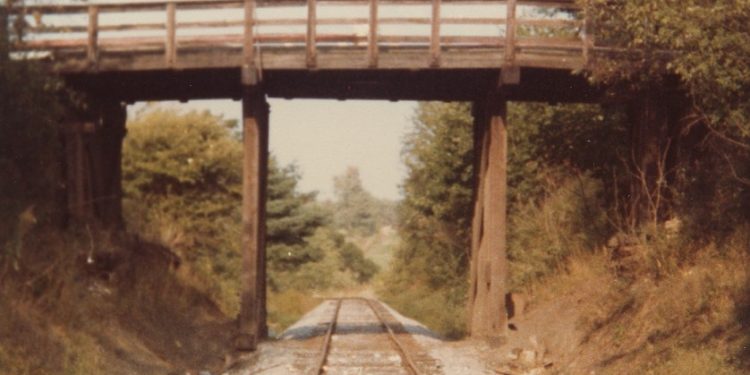Flapping boards and an apprehension of oncoming vehicles once greeted drivers who used the wooden bridge, in Ramey, during its final years.
Before its demolition and replacement by a modern concrete structure in the early 1980’s, some locals would say that they would hold their breath, say a prayer and step on the gas before crossing.
Ramey is a small borough that is surrounded by Woodward, Gulich and Bigler Townships. Typically, as with much of rural Pennsylvania, it has seen its population and the amount of business activity decline over the past decades. It is still, in a number of ways, a pleasant community.
The Pennsylvania Railroad once constructed wooden bridges, designed with a slight arc, to accommodate vehicle traffic that increasingly became part of local life in the years following World War I.
Ramey’s bridge kept traffic flowing on state Route 253, which makes its way from Houtzdale to connect with Route 53 in Van Ormer, in Cambria County.
Wood is not so much damaged by winter’s freezing and thawing cycle and resisted the corrosive effects of road salt better than concrete. The wooden bridge in Ramey held up well for years, even as traffic increased.
 Wooden bridges were stronger and more durable that many people would believe. The working life of the timbers would be extended when periodically treated with creosote or some other preservative.
Wooden bridges were stronger and more durable that many people would believe. The working life of the timbers would be extended when periodically treated with creosote or some other preservative.
The Pennsylvania Railroad was an efficiently run business. Its supplies and materials were of a standard and interchangeable design.
Tools, rails, cable, signs and railway station platforms all conformed to corporate dictates. So did wooden bridge and trestle designs.
The color photo shows the abutment supports on both ends of the bridge, whose design the PRR approved in November of 1907. They were patterned similar to those of their trestle design.
In time, Ramey’s wooden bridge to deteriorate, as shown in the black and white photo. By the 1960’s, the PRR faced a continually dire financial situation and both a corporately and federally mandated consolidation. Ramey’s bridge, as a result became mostly neglected and unsafe.
Before its replacement by the Pennsylvania Department of Transportation, some patriotic and ambitious kids and teens, in 1976, painted the bridge red, white and blue to honor the bicentennial celebration of the independence of the United States.



